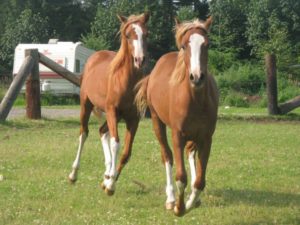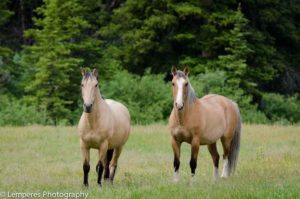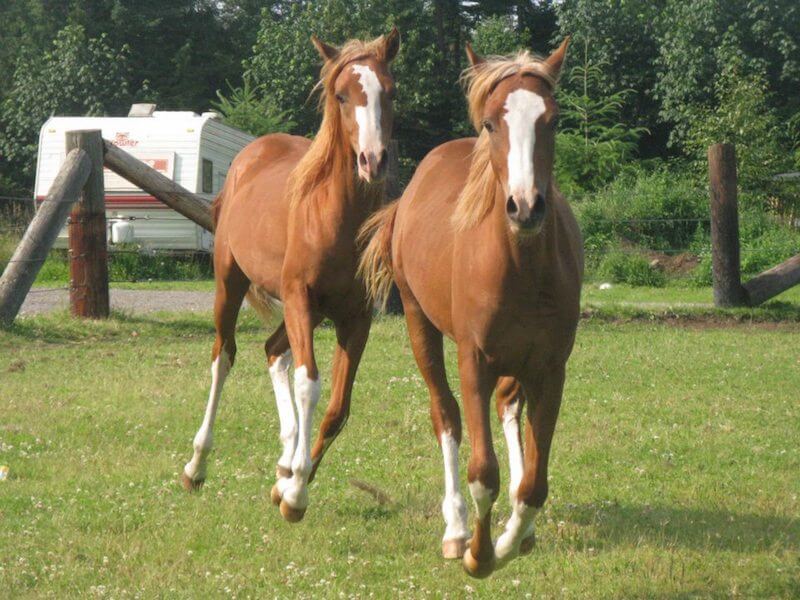Three Tips for a Healthy Transition
Gina Fresquez, MS, CHHC

Spring is in the air and though it is still early, as we get further into the season many horse owners will be chomping at the bit to get their horses out to pasture again. Not only does this save money, it saves a horse’s sanity after being cooped up all winter. However, before releasing the herd onto that fresh spring field there are some important feeding practices to consider.
First, you should have a basic understanding of how grass grows. After being primarily dormant during the winter, grass in early spring begins to prepare for growth by photosynthesis. This is where plants use the sun’s energy and convert it to sugars before being used for growth or stored as starch or fructans to be used later. It is in the spring, when we start to experience warmer sunny days and cold nights, that the grass begins this process and stores these sugars.

Typically, cool season grasses like the common ones we have in the Pacific Northwest (timothy, orchard, fescue, etc.), store these sugars as fructans. What is important to know about fructans is that they appear to not be digested in the foregut (small intestine) like other sugars, but rather digested in the hindgut (cecum). Good healthy horses typically have no problem with this, but it does pose a potential problem to horses with metabolic diseases and insulin sensitivities (like Cushing’s, laminitis, and insulin resistance) as the gut microbial population can be disrupted causing excess gas and toxins which can lead to colic, founder and laminitis.
Horses that have been out to pasture all year long naturally adjust to changes in forage, but there are a few precautions to take with stalled horses as we let them out to enjoy the newly grown spring pasture. Some horses with severe sensitivities may not be able to graze on pasture at all, or have limited access at only 2-4 hours with a grazing muzzle. For all other horses it is recommended to slowly introduce rich spring grass into the diet. Consider using these three factors for a healthy transition:
1. Feed a full meal of hay before letting the horse out to graze to prevent gorging.
2. On the first day start letting the horse graze for 30 minutes at a time, 1 to 2 times a day.
3. Slowly increase grazing time by 5-10 minutes a day, until the horse is grazing for about 6 hours a day. At this time the horse should be well adjusted and can graze freely.
As we prepare for warmer weather and letting our horses enjoy more time outside, make sure to remember to monitor your horse daily. Contact your veterinarian if you notice any unusual changes or have any concerns.
Published March 2014 Issue
Gina Fresquez, MS, is a lifelong horse enthusiast with a passion for helping horse owners make sense of equine nutrition. She received her BS in equine science and Master’s degree in equine nutrition from the University of Arizona and has worked as a technical equine specialist for Purina Animal Nutrition since 2006. Gina works closely with horse owners, stables and veterinarians determining feed rations, testing hay, and addressing nutritional related challenges in the Pacific Northwest.
Contact Gina and find out more information: www.horse.purinamills.com.
Cell: (206) 743-6453
Email: [email protected]






